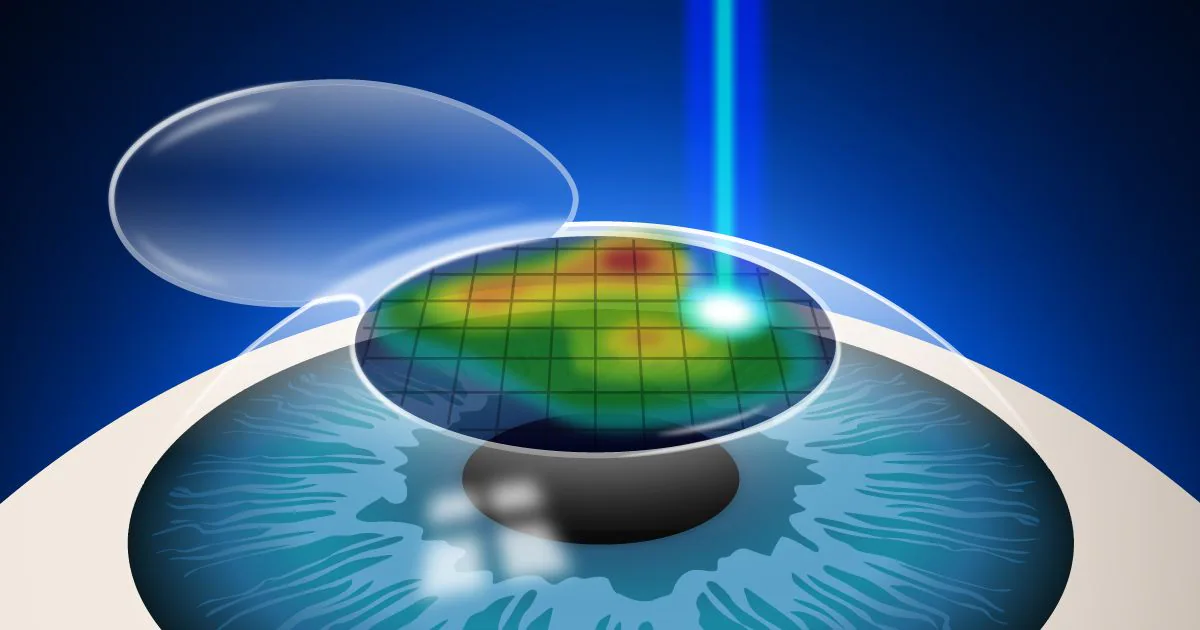The goal of LASIK surgery is to restore natural vision by reducing or eliminating the need for glasses and contact lenses. LASIK is an elective surgery that can be performed on healthy people who want superior aid-free natural vision for personal, professional or avocational activities. Before the procedure, your eye doctor will place numbing drops in each eye to reduce sensitivity and make the surgery painless. Next, the surgeon will use a surgical blade to create a thin flap in the corneal tissue.
What Is LASIK?
LASIK is an outpatient procedure that uses an excimer laser to reshape the clear front part of your eye called the cornea. It improves how light passes through your eye and reaches your retina, which lines the back of your eye. Your cornea helps to bend light so it can reach the retina and transmit visual information to your brain. It also controls your focusing ability.
To perform LASIK, a thin flap of tissue is created in your eye. This flap is then lifted and folded back, allowing your doctor to access the area of your cornea to be reshaped with the excimer laser. You will be given numbing drops and a suction ring to hold your eyelids open during the procedure. Your vision may dim a little during the procedure, but that should go away after a few hours. Your eye surgeon will explain the surgery and answer any questions you have. Then, you will lie in a comfortable reclining chair while the procedure is completed.
What Is The Procedure?
Lasik la habra, or laser-assisted in-situ keratomileusis, is an eye surgery that reshapes your cornea. This allows light to enter your eye correctly and take the proper path to the retina, which lines the back of your eye. In LASIK, a thin flap is made in your cornea using either a microkeratome or femtosecond laser. The surgeon then uses another laser to reshape the cornea and lays the flap back into place.
The laser is controlled by a computer, so the amount of energy delivered to your cornea will be pre-programmed for the correction you want. During the procedure, you may hear a ticking sound as the laser removes small amounts of tissue. You’ll need to stare at a light while your doctor reshapes your cornea with the laser. This will help keep your eye fixed on one spot while the laser works, so you won’t have to squint your eyes as much during the procedure.
What Is The Recovery Period?
Most patients have a fuller, clearer vision almost immediately after surgery. However, there will be some haziness or blurry vision during the first four to six hours of recovery as your eye flap heals. During this time, it is important not to rub or touch your eyes because it could tear the healing corneal flap. This will cause more pain and discomfort. You may also experience some light sensitivity and redness in your eyes, but this usually fades quickly after the procedure. Be sure to wear sunglasses if you go outdoors.
Avoid wearing makeup for a week after your LASIK eye surgery. This is because mascara and other makeup can clog your eyes and potentially lead to infections. During the first six months after your lasik la habra procedure, you will have regular visits with your doctor to monitor your progress and ensure that your eyes are healing properly. You should be able to reduce the number of prescription drops you use by the six month mark.
What Is The Cost?
The cost of LASIK depends on many factors. The level of vision correction needed, the technology used and the surgeon’s experience all play a role in the final price of your procedure. A good LASIK surgeon should be able to offer you all of your refractive surgery options at affordable prices and can answer your questions without pressure. You can also find a good price by looking around at multiple LASIK practices.
Some surgeons charge a flat rate for all laser eye surgery, and others base their prices on the specific technology they use to reshape your cornea. Some also consider your prescription when determining your price. For example, if you have a very low prescription for nearsightedness, you won’t be eligible for traditional LASIK or bladeless LASIK. You may need custom LASIK or wavefront LASIK, which involves using different lasers to customize your treatment plan.
What’s Next?
The cornea is the dome-shaped tissue at the front of your eye that bends light before it hits the retina. LASIK changes the shape of the cornea to improve how light hits your retina, making it easier for you to see clearly.
Read also more information newsbillions








